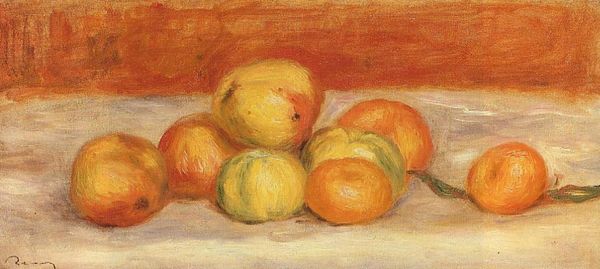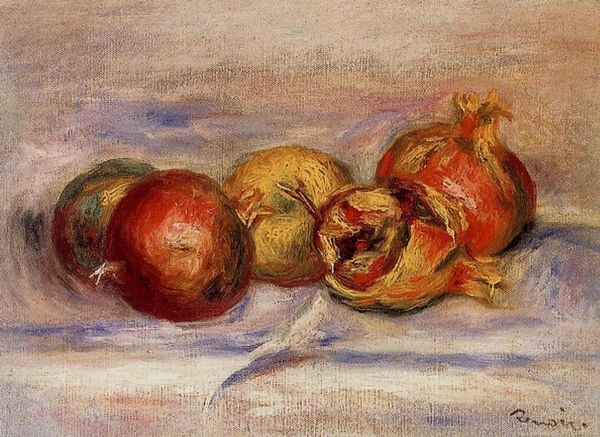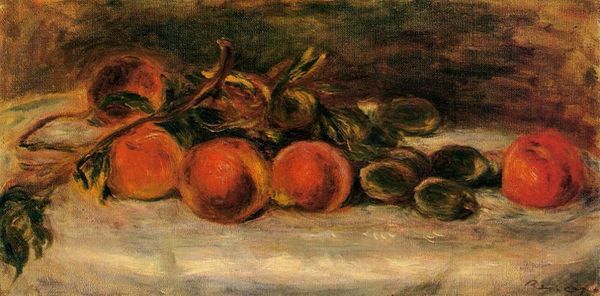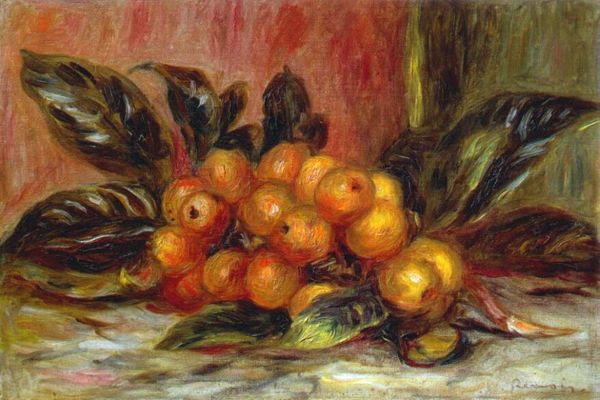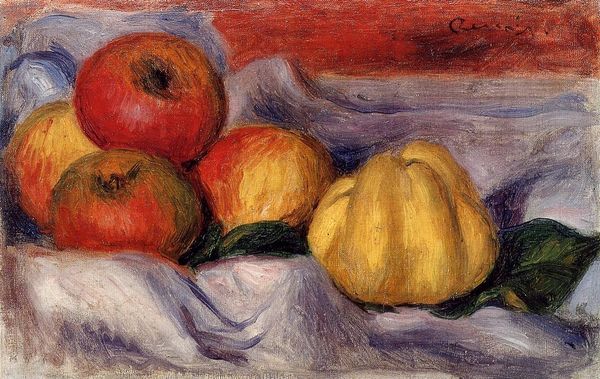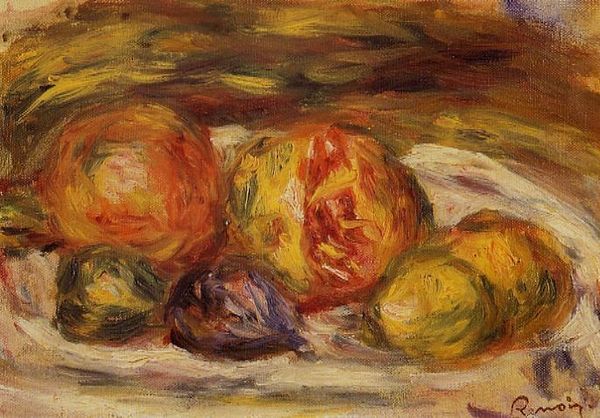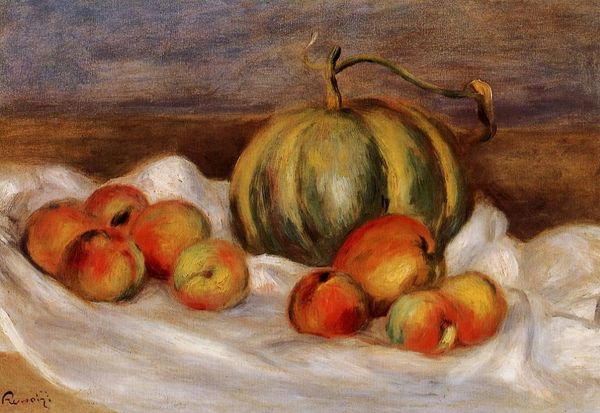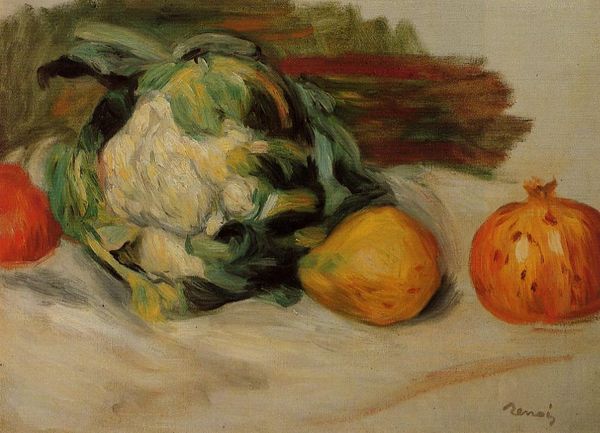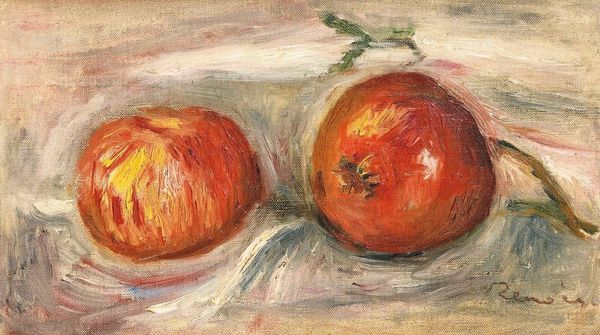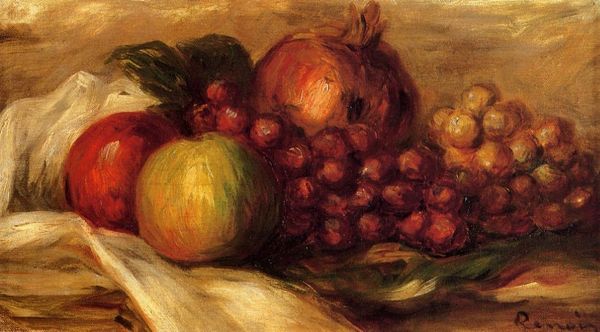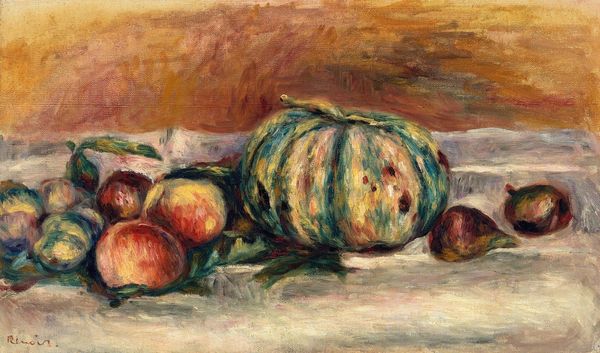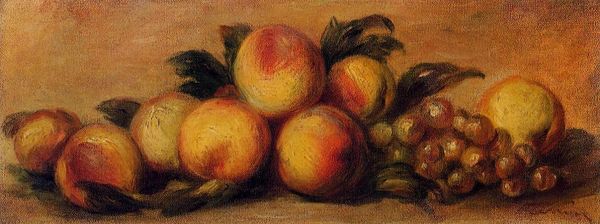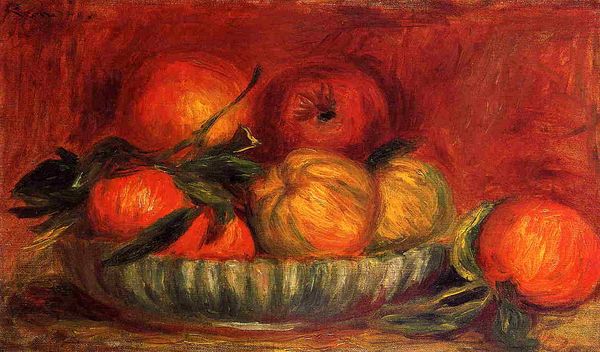
painting, oil-paint
#
still-life
#
painting
#
impressionism
#
oil-paint
#
oil painting
Copyright: Public domain
Editor: Here we have Renoir’s "Still Life with Peaches", created with oil paint. There's something so tangible about it. What strikes me most is the thick application of paint, like he's sculpting the peaches with color itself. How do you read this in terms of materials? Curator: Let’s consider how the material conditions shape the meaning here. The very texture and opacity of the oil paint are crucial. Each stroke, a distinct unit of labor, builds up the surface, highlighting the physicality of the peaches. It's about the production, not just the representation, right? Editor: Definitely! It makes me wonder about the choice of oil paint versus, say, watercolor. Does the richness of the oil imply anything about the social context of these peaches? Curator: Exactly! Oil paint was increasingly commercially available during this period, suggesting a shift in the accessibility of art production. It could reflect changing consumption patterns and perhaps the rising affluence of Renoir's clientele. What do you make of the dark shadow behind the peaches? Editor: I see it, and it makes the painting almost… unstable? It denies the objects a clean separation from their surroundings, hinting at some decay. Does this fit with a materialist perspective? Curator: Yes, think about the impermanence of organic materials, like the peaches themselves. Their shelf life, the labor involved in cultivating them – Renoir acknowledges a life cycle here, made concrete by the perishable quality of his subject and durable quality of his medium. What lasting impression do you have of this still life now? Editor: I now see "Still Life with Peaches" not just as a collection of fruit, but as a commentary on production, consumption, and the social contexts of its time, made physical through Renoir’s choice of material. Curator: Precisely, and understanding these processes deepens our appreciation beyond a simple visual appeal.
Comments
No comments
Be the first to comment and join the conversation on the ultimate creative platform.
